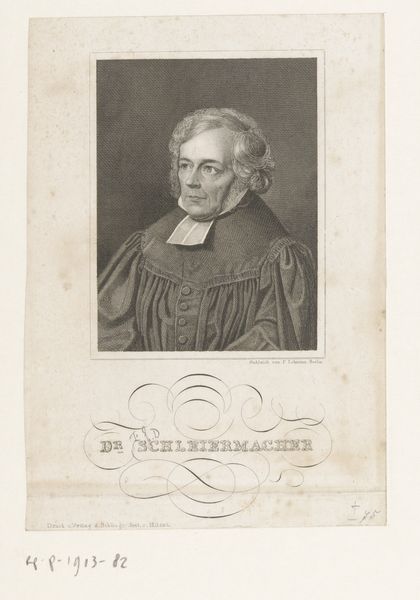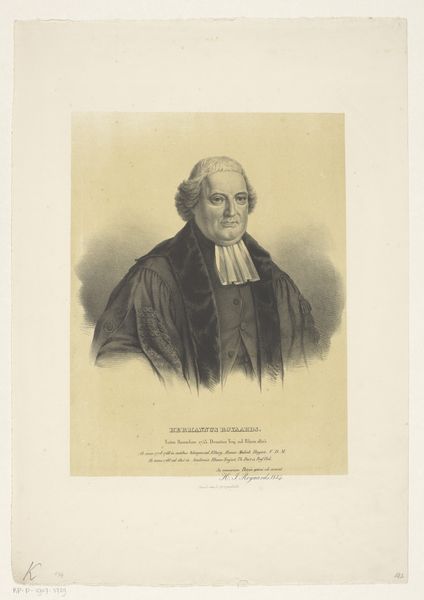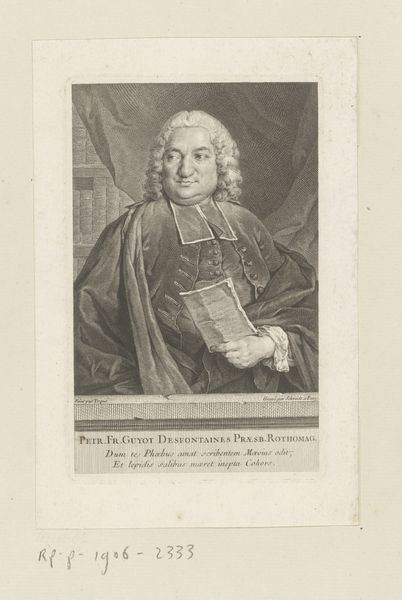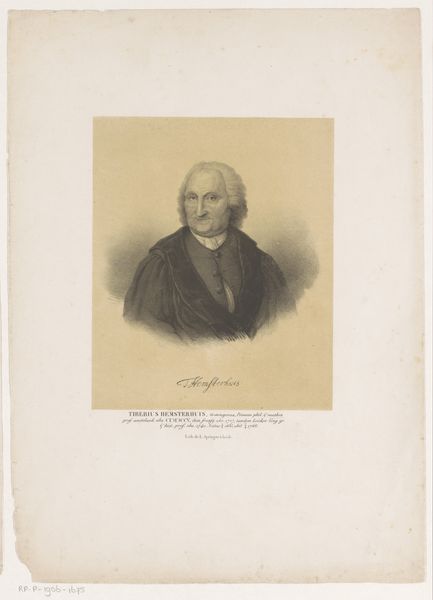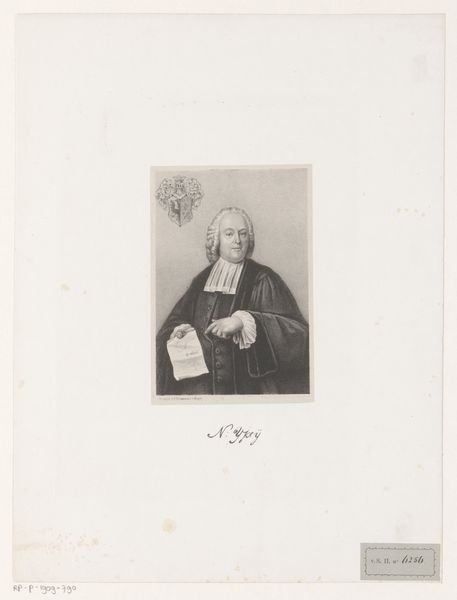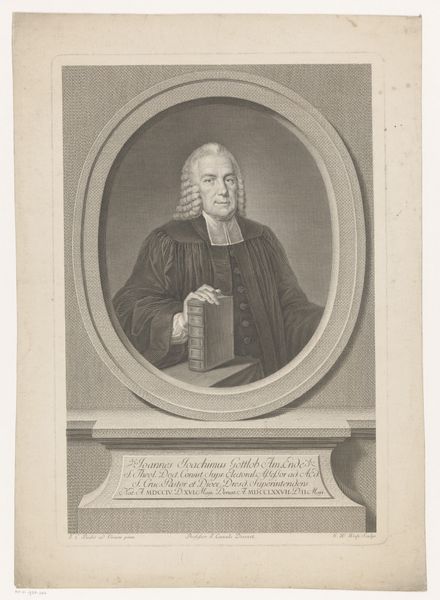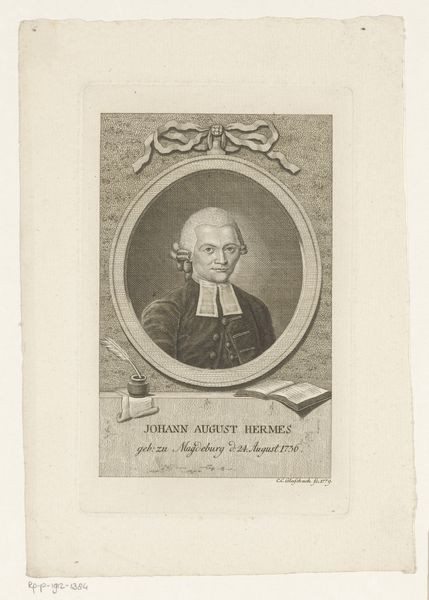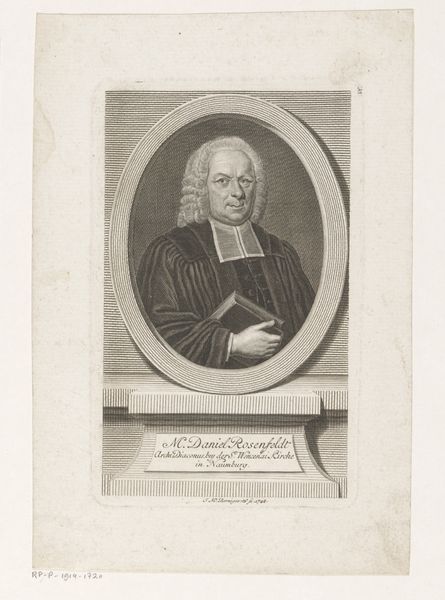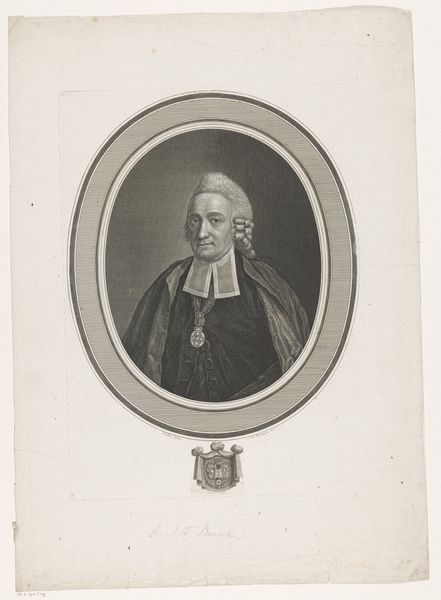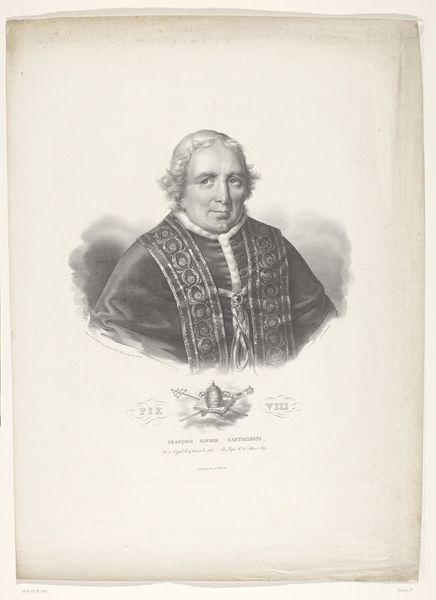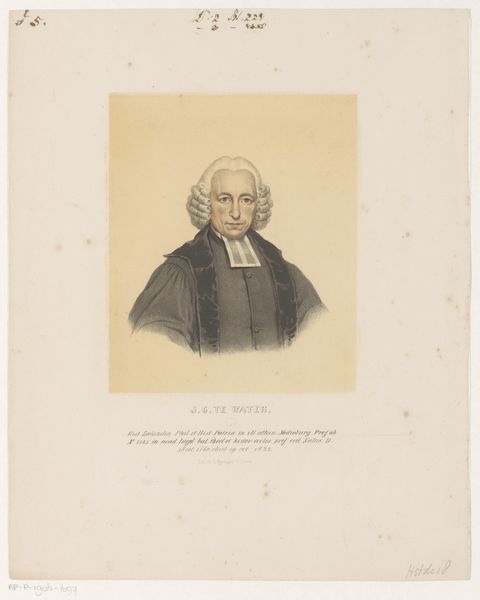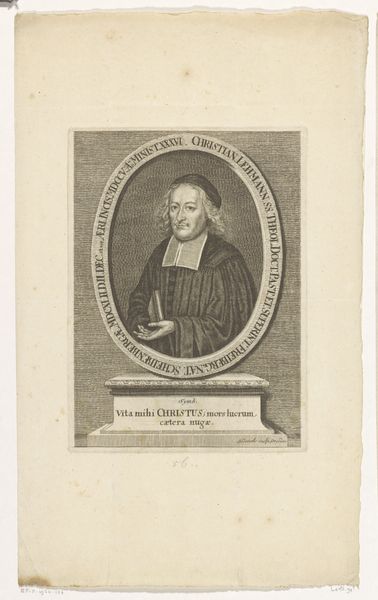
print, engraving
#
portrait
#
neoclacissism
# print
#
history-painting
#
engraving
Dimensions: height 571 mm, width 411 mm
Copyright: Rijks Museum: Open Domain
Curator: Before us, we have Antoine Jean Weber's "Portret van Paul Henri Marron," an engraving, likely produced between 1816 and 1839, reflecting the Neoclassical style. It immediately strikes me as reserved and formal, even severe. Editor: The figure is certainly posed in a traditional, almost formulaic way, but notice how the artist uses light and shadow. The textures of the fabrics are rendered with surprising nuance and delicacy for an engraving. I'm intrigued by the subtle play of light across his face. Curator: Indeed, that chiaroscuro speaks volumes, framing Marron within a very specific intellectual lineage. Remember that he was a prominent figure, President of the Christian Consistory of the Reformed Church in Paris, during a period of significant social and religious upheaval in France. Editor: Yes, and structurally, the composition divides itself horizontally into zones of darkness above, and progressively more lightness moving down the image's plane, directing the viewer’s eye down the clerical garments and his hand upon the volume. The use of light pulls our gaze in. Curator: I'm particularly drawn to the way Weber has situated Marron in relation to that open book. It's not just a prop; it's a symbol of knowledge and religious authority, subtly asserting the power dynamics within the social structure. And his garments reinforce the hierarchy of ecclesiastical power and knowledge systems. Editor: That's a sharp reading. For me, however, it is most striking to examine Weber's handling of the engraving itself; note how the quality of the line varies creating the soft glow around his face—not necessarily an interpretation, but certainly a calculated technical choice on Weber's part. Curator: Of course. However, such formal arrangements also play into Marron’s own performance of selfhood, the construction of his identity for public consumption and to legitimize his position within religious life at a complicated time. Editor: A fine point. On balance, perhaps it's this dynamic tension—between a certain coldness of form, and the evident, nuanced hand of the engraver—that keeps the artwork fresh. Curator: Agreed. The intersection between artistic choice and social role opens up a rich discourse that allows for a comprehensive and complex understanding of that portrait. Editor: In the end, by investigating both the lines that create form and the cultural milieu of that form, a deeper and richer dialogue emerges about the art and those who produce and interpret it.
Comments
No comments
Be the first to comment and join the conversation on the ultimate creative platform.
